|
|
|
Radschool Association Magazine - Vol 40 Page 8 |
|
Privacy Policy | Editorial Policy | Profit Policy | Join the Association | List of Members | Contact us | Index | Links |
|
Back Go to page: 1 2 3 4 5 6 7 8 9 10 11 12 13 14 15 16 17 18 19 20 Forward |
|
|
|
WANNABEES
We received the following from Paul Ninnes.
“Does anyone recognize the two gentlemen in the photo below?
They appeared shortly after the ANZAC Day march in Brisbane while several of us were chatting to the M and Z force veterans.
|
|
|
|
|
|
They looked almost like twins and neither of them wore name tags that I could see. They claimed that they were from some special photo-recon unit which in Vietnam went in ahead of everybody else etc. This info immediately volunteered by them of course - nobody asked them.
I can find no reference anywhere in texts or on the Net to the unit on their shoulder patch - "MASK. Special Forces - Commandos".
On viewing TV footage of the march they seem to have marched alone immediately behind, but not with The Team.
Wouldn't know where to begin in critiquing the anomalies in their uniforms and decorations. Black shirt, grey tie, US style para boots, para wings are not Oz. Some of the bottom row of medals are recognisable and Australian, plus a Vietnamese one - but I have no idea on most of the fruit salad above and can find only one match to the US Vietnamese Medal. Does any of it make sense to anyone?
Someone should have challenged them then and there but in later discussion it emerged that everyone assumed someone else knew them, plus they caught us all off guard in an atmosphere of camaraderie and goodwill. However I was immediately suspicious and got several shots of them on camera so didn't participate much in the conversation.
The guy on the left at rear BTW is Don Astill, OAM ex 2/8th Commando Squadron. You'd never know he was 90+ as were several of his comrades who also marched on the day.
If these two are genuine I'd be most interested in their story.
However if nobody can vouch for them I guess the question is - what next?”
|
|
The Enola Gay.
Louis "Studs" Terkel (May 16, 1912 – October 31, 2008) was an American author, historian, actor, and broadcaster. He received the Pulitzer Prize for General Non-Fiction in 1985 for “The Good War”, an oral history of World War two and is best remembered for his long-running radio show in Chicago.
In 2002 he interviewed Paul Tibbets, the pilot of the B-29 that dropped the first atom bomb.
Studs Terkel: We're seated here, two old gaffers. Me and Paul Tibbets, 89 years old, brigadier-general retired, in his home town of Columbus, Ohio, where he has lived for many years. Paul Tibbets: Hey, you've got to correct that. I'm only 87. You said 89. Studs Terkel: I know. See, I'm 90. So I got you beat by three years. Now we've had a nice lunch, you and I and your companion. I noticed as we sat in that restaurant, people passed by. They didn't know who you were. But once upon a time, you flew a plane called the Enola Gay over the city of Hiroshima, in Japan, on a Sunday morning - August 6 1945 - and a bomb fell. It was the atomic bomb, the first ever. And that particular moment changed the whole world around. You were the pilot of that plane. Paul Tibbets: Yes, I was the pilot.
Studs
Terkel:
And the Enola Gay was named after... Paul Tibbets: My mother. She was Enola Gay Haggard before she married my dad, and my dad never supported me with the flying - he hated airplanes and motorcycles. When I told them I was going to leave college and go fly planes in the army air corps, my dad said, "Well, I've sent you through school, bought you automobiles, given you money to run around with the girls, but from here on, you're on your own. If you want to go kill yourself, go ahead, I don't give a damn" Then Mom just quietly said, "Paul, if you want to go fly airplanes, you're going to be all right." And that was that. Studs Terkel: Where was that? Paul Tibbets: Well, that was Miami, Florida. My dad had been in the real estate business down there for years and at that time he was retired. And I was going to school at Gainesville, Florida, but I had to leave after two years and go to Cincinnati because Florida had no medical school. Studs Terkel: You were thinking of being a doctor? Paul Tibbets: I didn't think that, my father thought it. He said, "You're going to be a doctor," and I just nodded my head and that was it. And I started out that way; but about a year before I graduated, I was able to get into an airplane, fly it - I soloed - and I knew then that I had to go fly airplanes.
Studs
Terkel:
Now by 1944 you were a pilot - a test pilot on the program to develop
the B-29 bomber. When did you get word that you had a special
assignment? Paul Tibbets: One day [in September 1944] I'm running a test on a B-29, I land, a man meets me. He says he just got a call from General Uzal Ent [commander of the second air force] at Colorado Springs, he wants me in his office the next morning at nine o'clock. He said, "Bring your clothing - your B4 bag - because you're not coming back." Well, I didn't know what it was and didn't pay any attention to it - it was just another assignment. I got to Colorado Springs the next morning perfectly on time. A man named Lansdale met me, walked me to General Ent's office and closed the door behind me. With him was a man wearing a blue suit, a US Navy captain - that was William Parsons, who flew with me to Hiroshima- and Dr Norman Ramsey, Columbia University professor in nuclear physics. And Norman said: "OK, we've got what we call the Manhattan Project. What we're doing is trying to develop an atomic bomb. We've gotten to the point now where we can't go much further till we have airplanes to work with." He gave me an explanation which probably lasted 45, 50 minutes, and they left. General Ent looked at me and said, "The other day, General Arnold [commander general of the army air corps] offered me three names. "Both of the others were full colonels; I was a lieutenant-colonel. He said that when General Arnold asked which of them could do this atomic weapons deal, he replied without hesitation, "Paul Tibbets is the man to do it." I said, "Well, thank you, sir." Then he laid out what was going on and it was up to me now to put together an organization and train them to drop atomic weapons on both Europe and the Pacific - Tokyo ... Studs Terkel: Interesting that they would have dropped it on Europe as well. We didn't know that. Paul Tibbets: My edict was as clear as could be. Drop simultaneously in Europe and the Pacific because of the secrecy problem - you couldn't drop it in one part of the world without dropping it in the other. And so he said, "I don't know what to tell you, but I know you happen to have B-29's to start with. I've got a squadron in training in Nebraska - they have the best record so far of anybody we've got. I want you to go visit them, look at them, talk to them, do whatever you want. If they don't suit you, we'll get you some more." He said: "There's nobody could tell you what you have to do because nobody knows. If we can do anything to help you, ask me." I said thank you very much. He said, "Paul, be careful how you treat this responsibility, because if you're successful you'll probably be called a hero. And if you're unsuccessful, you might wind up in prison." Studs Terkel: Did you know the power of an atomic bomb? Were you told about that? Paul Tibbets: No, I didn't know anything at that time. But I knew how to put an organization together. He said, "Go take a look at the bases, and call me back and tell me which one you want." I wanted to get back to Grand Island, Nebraska ; that's where my wife and two kids were, where my laundry was done, and all that stuff. But I thought, "Well, I'll go to Wendover [army airfield, in Utah ] first and see what they've got." As I came in over the hills I saw it was a beautiful spot. It had been a final staging place for units that were going through combat crew training, and the guys ahead of me were the last P-47 fighter outfit. This lieutenant-colonel in charge said, "We've just been advised to stop here and I don't know what you want to do...but if it has anything to do with this base, it's the most perfect base I've ever been on. You've got full machine shops, everybody's qualified, they know what they want to do. It's a good place."
|
|
|
|
|
|
Studs Terkel: And now you chose your own crew.
Paul
Tibbets:
Well, I had mentally done it before that. I knew right away I was going
to get Tom Ferebee [the Enola
Gay's bombardier] and Theodore "Dutch" van Kirk [navigator] and Wyatt
Duzenbury [flight engineer]. Studs Terkel: Guys you had flown with in Europe ? Paul Tibbets: Yeah. Studs Terkel: And now you're training. And you're also talking to physicists like Robert Oppenheimer [senior scientist on the Manhattan project]. Paul Tibbets: I think I went to Los Alamos [the Manhattan project HQ] three times, and each time I got to see Dr Oppenheimer working in his own environment. Later, thinking about it, here's a young man, a brilliant person. And he's a chain smoker and he drinks cocktails. And he hates fat men. And General Leslie Groves [the general in charge of the Manhattan project], he's a fat man, and he hates people who smoke and drink. The two of them are the first, original odd couple.
Studs
Terkel:
They had a feud, Groves and Oppenheimer? Paul Tibbets: Yeah, but neither one of them showed it. Each one of them had a job to do. Studs Terkel: Did Oppenheimer tell you about the destructive nature of the bomb? Paul Tibbets: No. Studs Terkel: How did you know about that? Paul Tibbets: From Dr Ramsey. He said the only thing we can tell you about it is, it's going to explode with the force of 20,000 tons of TNT. I'd never seen 1 lb of TNT blow up. I'd never heard of anybody who'd seen 100 lbs of TNT blow up. All I felt was that this was gonna be one hell of a big bang. Studs Terkel: Twenty thousand tons - that's equivalent to how many planes full of bombs? Paul Tibbets: Well, I think the two bombs that we used [at Hiroshima and Nagasaki ] had more power than all the bombs the air force had used during the war in Europe ... Studs Terkel: So Ramsey told you about the possibilities. Paul Tibbets: Even though it was still theory, whatever those guys told me, that's what happened. So I was ready to say I wanted to go to war, but I wanted to ask Oppenheimer how to get away from the bomb after we dropped it. I told him that when we had dropped bombs in Europe and North Africa, we'd flown straight ahead after dropping them - which is also the trajectory of the bomb. But what should we do this time? He said, "You can't fly straight ahead because you'd be right over the top when it blows up and nobody would ever know you were there." He said I had to turn tangent to the expanding shock wave. I said, "Well, I've had some trigonometry, some physics. What is tangency in this case?" He said it was 159 degrees in either direction. "Turn 159 degrees as fast as you can and you'll be able to put yourself the greatest distance from where the bomb exploded."
Studs
Terkel:
How many seconds did you have to make that turn? Paul Tibbets: I had dropped enough practice bombs to realize that the charges would blow around 1,500 ft in the air, so I would have 40 to 42 seconds to turn 159 degrees. I went back to Wendover as quick as I could and took the airplane up. I got myself to 25,000 ft and I practiced turning, steeper, steeper, steeper and I got it where I could pull it round in 40 seconds. The tail was shaking dramatically and I was afraid of it breaking off, but I didn't quit. That was my goal. And I practiced and practiced until, without even thinking about it, I could do it in between 40 and 42, all the time. So, when that day came... Studs Terkel: You got the go-ahead on August 5. Paul Tibbets: Yeah. We were in Tinian [the US island base in the Pacific] at the time we got the OK. They had sent this Norwegian to the weather station out on Guam [the US 's westernmost territory] and I had a copy of his report. We said that, based on his forecast, the sixth day of August would be the best day that we could get over Honshu [the island on which Hiroshima stands]. So we did everything that had to be done to get the crews ready to go: airplane loaded, crews briefed, all of the things checked that you have to check before you can fly over enemy territory. General Groves had a brigadier-general who was connected back to Washington DC by a special teletype machine. He stayed close to that thing all the time, notifying people back there, all by code, that we were preparing the airplanes to go any time after midnight on the sixth. And that's the way it worked out. We were ready to go at about four o'clock in the afternoon on the fifth and we got word from the president that we were free to go: "Use me as you wish." They give you a time you're supposed to drop your bomb on target and that was 9:15 in the morning, but that was Tinian time, one hour later than Japanese time. I told Dutch, "You figure it out what time we have to start after midnight to be over the target at 9 a.m."
Studs
Terkel:
That'd be Sunday morning. Paul Tibbets: Well, we got going down the runway at right about 2:15 a.m. and we took off, we met our rendezvous guys, we made our flight up to what we call the initial point, that would be a geographic position that you could not mistake. Well, of course we had the best one in the world with the rivers and bridges and that big shrine. There was no mistaking what it was. Studs Terkel: So you had to have the right navigator to get it on the button.
Paul
Tibbets:
The airplane has a bomb sight connected to the autopilot and the
bombardier puts figures in there for where he wants to be when he drops
the weapon, and that's transmitted to the airplane. We always took into
account what would happen if we had a failure and the bomb bay doors
didn't open; we had a manual release put in each airplane so it was
right down by the bombardier and he could pull on that. And the guys in
the airplanes that followed us to drop the instruments needed to know
when it was going to go. We were told not to use the radio, but, hell, I
had to. I told them I would say, "One minute out," "Thirty seconds out,"
"Twenty seconds" and "Ten" and then I'd count, "Nine, eight, seven, six,
five, four seconds", which would give them a time to drop their cargo.
They knew what was going on because they knew where we were. And that's
exactly the way it worked; it was absolutely perfect. After we got the
airplanes in formation I crawled into the tunnel and went back to tell
the men, I said, "You know what we're doing today?" They said, "Well,
yeah, we're going on a bombing mission." I said, "Yeah, we're going on a
bombing mission, but it's a little bit special." My tail gunner, Bob
Caron, was pretty alert. He said, "Colonel, we wouldn't be
So we're coming down. We get
to that point where I say "one second" and by the time I'd got that
second out of my mouth the airplane had lurched, because 10,000 lbs had
come out of the front. I'm in this turn now, tight as I can get it, that
helps me hold my altitude and helps me hold my airspeed and everything
else all the way round.. When I
level out, the nose is a little bit high and as I look up there the
whole sky is lit up in the prettiest blues and pinks I've ever seen in
my life. It was just great. I tell people I tasted it. "Well," they say,
"what do you mean?" When I was a child, if you had a cavity in your
tooth the dentist put some mixture of some cotton or whatever it was and
lead into your teeth and pounded them in with a hammer. I learned that
if I had a spoon of ice-cream and touched one of those teeth I got this
electrolysis and I got the taste of lead out of it. And I knew right
away what it was. OK, we're all going. We had been briefed to stay off
the radios: "Don't say a damn word,
what we do is we make this turn, we're going to get out of here as fast
as we can." I want to get out over the
sea of Japan because I know they can't find me over there. With
that done we're home free. Then Tom
Ferebee has to fill out his bombardier's report and Dutch, the
navigator, has to fill out a log. Tom is working on his log and says,
"Dutch, what time were Studs Terkel: Did you hear an explosion? Paul Tibbets: Oh yeah. The shockwave was coming up at us after we turned. And the tail gunner said, "Here it comes." About the time he said that, we got this kick in the ass. I had accelerometers installed in all airplanes to record the magnitude of the bomb. It hit us with two and a half G. Next day, when we got figures from the scientists on what they had learned from all the things, they said, "When that bomb exploded, your airplane was 10 and half miles away from it." Studs Terkel: Did you see that mushroom cloud? Paul Tibbets: You see all kinds of mushroom clouds, but they were made with different types of bombs. The Hiroshima bomb did not make a mushroom. It was what I call a stringer. It just came up. It was black as hell and it had light and colours and white in it and gray colour in it and the top was like a folded-up Christmas tree. Studs Terkel: Do you have any idea what happened down below? Paul Tibbets: Pandemonium! I think it's best stated by one of the historians, who said: "In one micro-second, the city of Hiroshima didn't exist."
Studs
Terkel:
You came back and you visited President Truman. Paul Tibbets: We're talking 1948 now. I'm back in the Pentagon and I get notice from the chief of staff, Carl Spaatz, the first chief of staff of the air force. When we got to General Spaatz's office, General Doolittle was there and a colonel named Dave Shillen. Spaatz said, "Gentlemen, I just got word from the president he wants us to go over to his office immediately." On the way over, Doolittle and Spaatz were doing some talking; I wasn't saying very much. When we got out of the car we were escorted right quick to the Oval Office. There was a black man there who always took care of Truman's needs and he said, "General Spaatz, will you please be facing the desk?" And now, facing the desk, Spaatz is on the right, Doolittle and Shillen. Of course, militarily speaking, that's the correct order, because Spaatz is senior, Doolittle has to sit to his left.
Then I was taken by this man
and put in the chair that was right beside the president's desk, beside
his left hand. Anyway, we got a cup of coffee and we got most of it
consumed when Truman walked in and everybody stood on their feet. He
said, "Sit down, please," and he had a big smile on his face and he
said, "General Spaatz, I want to
congratulate you on being first chief of the Air Force," because it was
no longer the air corps. Spaatz
said, "Thank you, sir, it's a great honour and I appreciate it." And he
said to Doolittle: "That was a magnificent thing you pulled flying off
of that carrier," and Doolittle said, "All in a day's work, Mr.
President." And he looked at Dave
Shillen and sai Studs Terkel: Anybody ever give you a hard time? Paul Tibbets: Nobody gave me a hard time. Studs Terkel: Do you ever have any second thoughts about the bomb? Paul Tibbets: Second thoughts? No. Studs, look, I got into the air corps to defend the United States to the best of my ability. That's what I believe in and that's what I work for.
Paul Tibbets died on the 1st November, 2007, aged 92
|
|
|
|
A bloke stopped at a petrol station out in the country and after he'd filled his tank he took a break beside his car while he drank a Pepsi. As he relaxed, he watched a couple of men working along the roadside. One man would dig a hole two or three feet deep and then move on. The other man came along behind him and filled in the hole. The men worked right past the bloke with the soft drink and went on down the road. Overcome by curiosity, the bloke headed for the first man. "Hey there," he said to the men. "Can you tell me what's going on here with this digging?" "We work for the government," one of the men said. "But one of you is digging a hole and the other is filling it up. Isn't that a waste of money?" "Well," one of the men replied, "normally there's three of us - me, Rodney, and Mike. I dig the hole, Rodney sticks in the tree, and Mike here puts the dirt back." Rodney called in sick today!!! |
|
|
|
Back Go to page: 1 2 3 4 5 6 7 8 9 10 11 12 13 14 15 16 17 18 19 20 Forward |
|
|
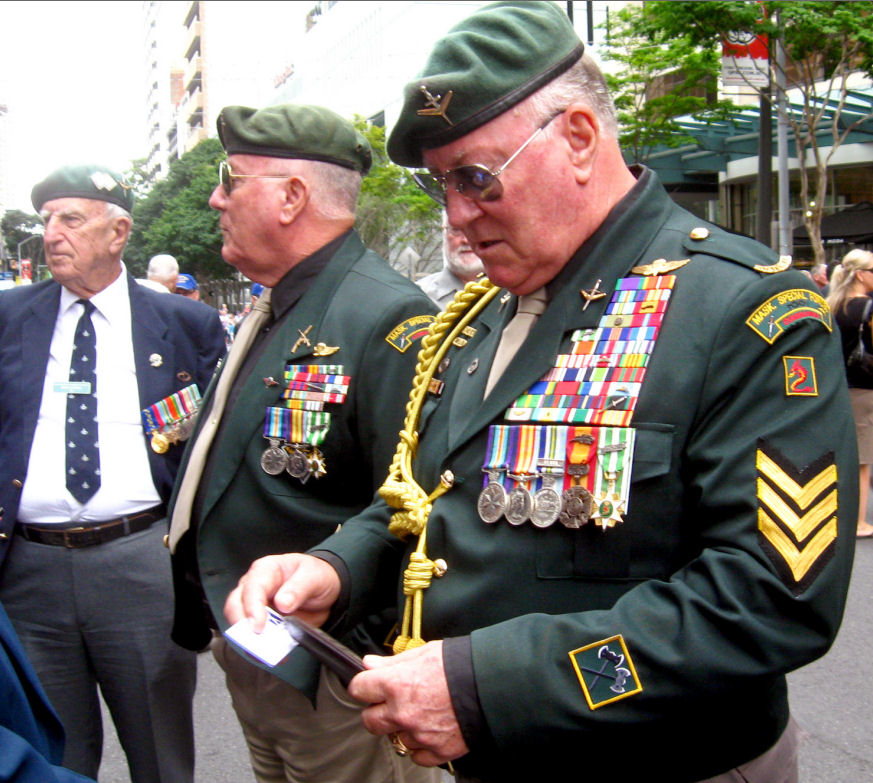
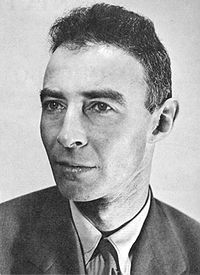

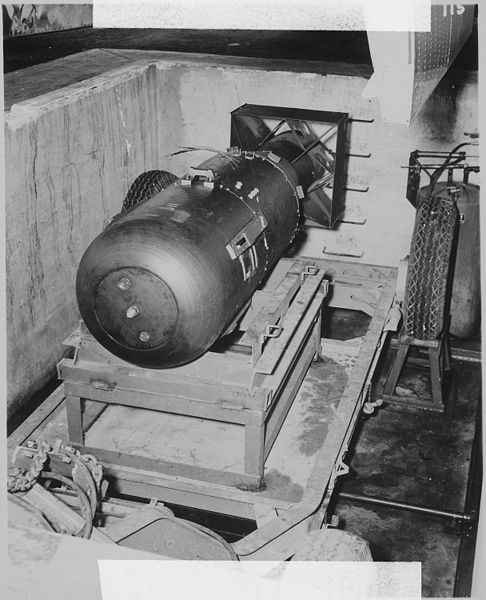 playing with atoms today, would we?" I said, "Bob, you've got it just
exactly right." So I went back up in the front end and I told the
navigator, bombardier, flight engineer, in turn. I said, "OK, this is an
atom bomb we're dropping." They listened intently but I didn't see any
change in their faces or anything else. Those guys were no idiots. We'd
been fiddling round with the most peculiar-shaped things we'd ever seen.
playing with atoms today, would we?" I said, "Bob, you've got it just
exactly right." So I went back up in the front end and I told the
navigator, bombardier, flight engineer, in turn. I said, "OK, this is an
atom bomb we're dropping." They listened intently but I didn't see any
change in their faces or anything else. Those guys were no idiots. We'd
been fiddling round with the most peculiar-shaped things we'd ever seen.
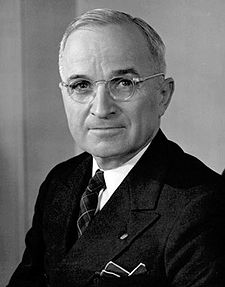
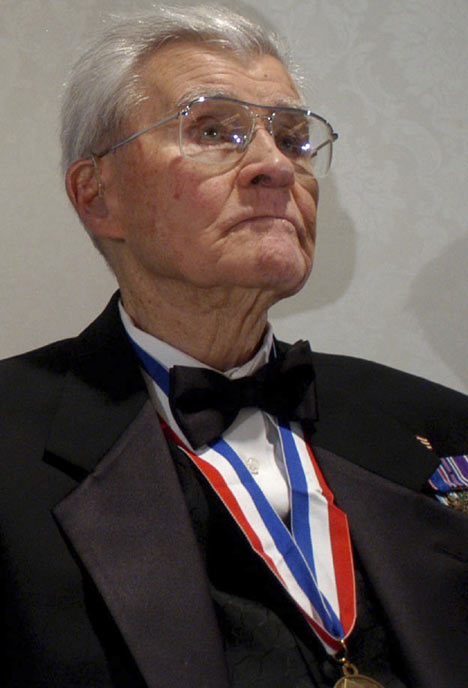 d,
"Colonel
d,
"Colonel